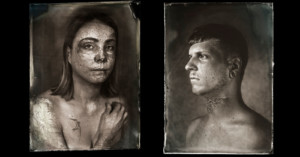
Wet Plate Collodion Portraits of Burn Victims
Clément Marion, a French photographer in his early twenties, shoots only with analog processes. In his latest project, he decided to use wet plate collodion to capture intimate portraits of burn victims.

Clément Marion, a French photographer in his early twenties, shoots only with analog processes. In his latest project, he decided to use wet plate collodion to capture intimate portraits of burn victims.
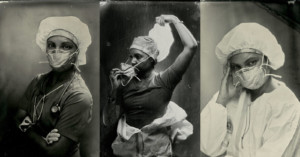
It hasn’t been easy being a portrait photographer during a pandemic. I opened my tintype portrait studio in February of 2020 with visions of goofy vintage photo remakes and smiling families gracing my lens. By the end of March, it was only still lifes full of skulls and dead flowers, dark and stale tones oddly appropriate for the time.
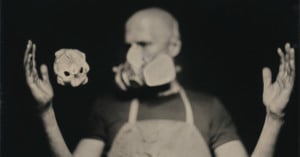
Photographer Markus Hofstätter has made a name for himself by pushing wet plate photography to new heights, trying things others have never even thought to do. Today brings yet another example of his creativity, as he sets out to create an animation using, not digital files, but wet plate collodion tintypes.
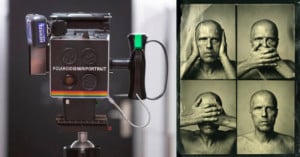
Passport photos on wet plate collodion aren't legally compliant, but you're guaranteed to have fun making them. I shot wet plate collodion passport photos using a Polaroid Miniportrait camera.
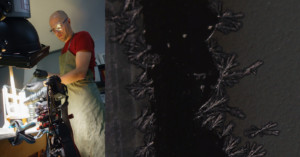
Normally I use videos to document my work. This time the video is the main outcome of my work -- I shot an ultra-macro video that shows how the crystals/salts change during the wet plate collodion process.
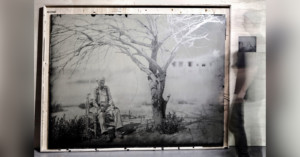
Wet plate collodion photographer Ian Ruhter has made a name for himself by pushing the boundaries of the medium. For his latest endeavor, Ruhter turned a 200-pound sheet of glass into the world's largest wet plate collodion photo.
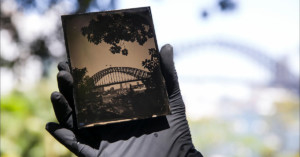
Adrian Cook is a wet plate collodion photographer based in Sydney, Australia. The Guardian made this 7-minute video in which Cook talks about his background and walks through the wet plate collodion process by shooting a photo of Sydney Harbor.
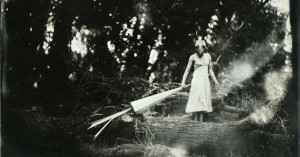
French photographer Nède has been working on a project called Altered Reality in which he explores the line between mundane reality and madness. One of the images, shown above, is titled "The Unsuspecting Victim."
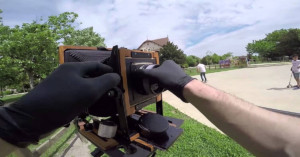
During a photo shoot last summer under the hot sun in the South of France, photographer …
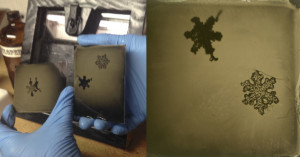
Want a crazy photography challenge? Try photographing a snowflake. Want to make it even more challenging? Try doing it with the wet plate collodion process.
That's what a couple of photography professors over at the Rochester Institute of Technology recently attempted and pulled off.
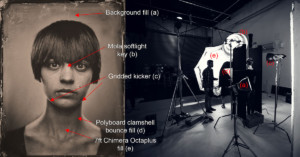
This is a story about a collaboration to overcome 19th century technology problems using 21st century technology to produce well lit portraits.
Luke White and I, Paul Alsop, are two English photographers living in New Zealand who came together in 2014 to make wet plate collodion portraits.
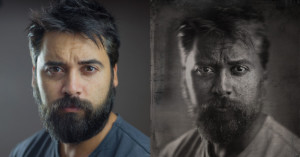
Love the look of wet plate collodion photographs? Did you know you can give any digital photo that same look using Photoshop? It's a technique that can be learned in about 10 minutes.

Want to see how wet-plate collodion photography is done but have the attention span of a goldfish? Our buddy Sam Cornwell over at Phogotraphy has created an unusual step-by-step wet plate walkthrough -- everything is crammed into a 6-second Vine video.
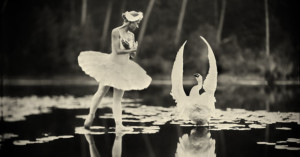
Wet plate collodion photographer Alex Timmermans recently shot a new photo titled "Swan Lake" for his surreal Story Telling project. Here's a look at how the image was made.

During past few weeks I have been working on a new picture I had in mind. This time I already knew the title: "The Rain Maker." It's a picture made with the collodion photographic process that was invented back in 1851.
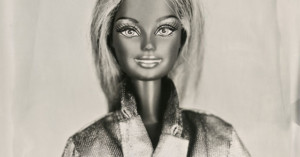
"Barbie Blad" by photographer Hamid Blad is a series of portraits that mixes the old and the new. The oldness is contributed by the fact that they are created using the 19th-century collodion process, while the newness is due to the fact that each portrait is of a Barbie doll.
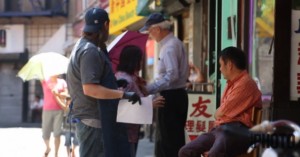
Photographer Justin Borucki has spent the better part of a year and a …
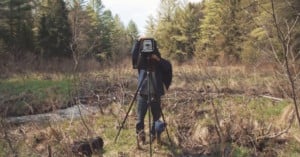
Skateboard company Element recently put together a wonderful little mini-documentary titled The Road to Wolfboro. In it, a dedicated film crew follows photographer Brian Gaberman around as he shares his fascination of wet plate photography and captures some of the most beautiful scenes across the east cost.
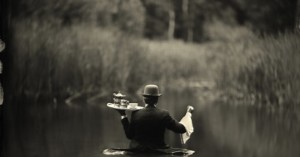
From portraits to surreal scenes that feel as if they were pulled out of some long-lost storybook, the wet plate collodion photography of Alex Timmermans is unlike any we've seen or featured before.
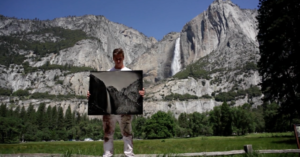
Two years after photographer Ian Ruhter tried to capture photographs of the Yosemite Valley using the world’s largest wet plate collodion camera and suffered a "devastating failure," he decided to chase this seemingly impossible dream again.
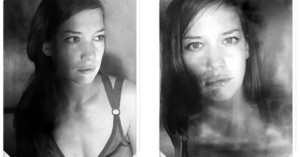
With the rise of digital photography, good old-fashioned film processing has, for the most part, become a thing of the past for many of us. But with a new app called Koloid, photography enthusiasts can play around with the look and feel of wet plate collodion photography while creating digital images with their iPhones and iOS devices.
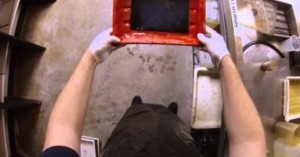
Here's a video that may be very interesting to you if you've never tried your hand at creating a tintype with wet plate collodion photography. Oklahoma City-based photographer Mark Zimmerman recently strapped a GoPro Hero 3 to his head and went through the entire process of creating a wet-plate photo on aluminum, from flowing the collodion in the beginning, through exposing it using his large format camera, and ending with a finished tintype photo of a camera.
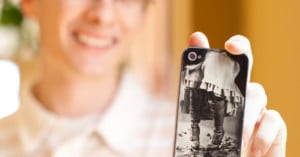
iPhone users who want to flaunt their inner photography geek can buy special skins or cases that transform their phone into a camera look-alike. That option wasn't awesome enough for photographer Jake Potts of Bruton Stroube Studios, who recently decided to use his phone's glass back to create an ambrotype photo using the wet plate collodion process!

Photographer Matt Alberts used an antiquated wet plate tintype camera to cover the modern world of freeride motocross.
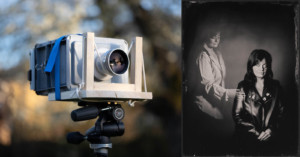
Photographer Corrine Gretton-West booked a wet plate workshop with me before the COVID-19 pandemic began. Two years later we were finally able to do it.
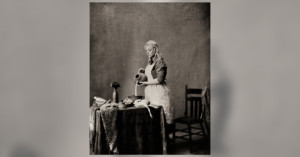
The Accademia del Disegno (“Academy of Design”), which opened in 1563 Florence, Italy was the world’s first academy of art. Prior to that time, to succeed with a career in the arts, a would-be artist either apprenticed in a respected Master’s atelier or was self-educated.
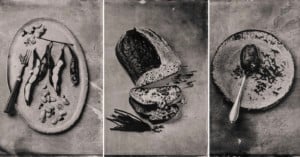
Photographer Markus Hofstätter -- known for his collodion wet-plate photography expertise -- decided to try something different and used the 170-year old shooting process to capture incredibly detailed high-end food photos.
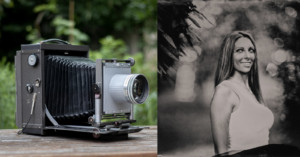
Well-known wet plate photographer Markus Hofstätter recently purchased an old wet-plate camera, repaired it to a working condition, and added two lenses to it with the help of his 3D printer.
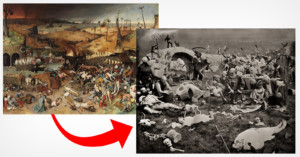
For the past five years, I have organized an annual photographic Tableaux Vivant based on classic paintings. I have included anywhere from 15, or in the instance of my 2021 construction, No Vaccine for Death, 90 collaborators.
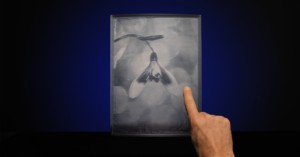
Photographer Markus Hofstätter had been designing parts for his cameras and 3D printing them at home when the idea to try something new struck him: 3D printing photographs. After a lot of trial and error, he successfully found a way to translate wet plate photos into 3D printed pieces.
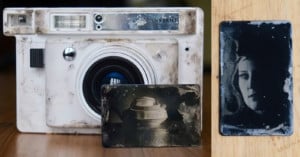
Italian photographer Ursula Ferrara's Lomography Lomo'Instant Wide camera is a bit different than others you'll find. Instead of shooting Instax Wide instant photos, it's used for capturing tiny wet plate collodion photos.
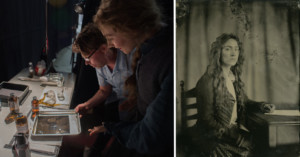
Now these are some cast portraits we can really get behind. On-set photographer Wilson Webb recently got the chance to photograph the entire cast of Best Picture nominee Little Women, but instead of shooting glitzy studio portraits, he decided to stay historically accurate and capture wet plate collodion portraits instead.
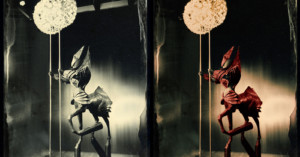
Fine art photographer Borut Peterlin was recently commissioned to shoot some ambrotypes by costume designer Alan Hranitelj, but he went a few steps beyond your standard wet plate collodion photography. In addition to shooting some beautiful multiple-exposures, he also decided to colorize the scans, creating striking photographs the likes of which we've not seen before.
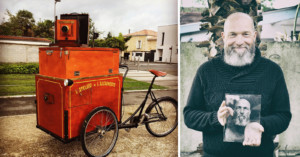
Michaël Tirat, a wet plate photographer based in Bordeaux, France, has created something pretty special. In an attempt to make his photography services more portable, he's created a mobile darkroom on a tricycle that enables him to capture wet plates photography all over the city.
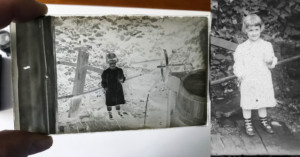
In my work travels, I recently met someone who gave me an interesting gift. Several years back he had been driving down a back road in Virginia and came across an old, abandoned farmhouse. He stopped and peeked in to see if anyone was using the place (you can’t be too careful about what you run across that looks abandoned these days), and saw only cobwebs.
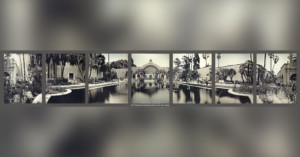
I’ve been experimenting non-stop with a few new daguerreotype techniques lately, and however promising the results are looking so far, those experiments are slow going. But here’s something I thought up and was able to execute in a relatively speedy manner -- something I believe warrants a look. I don’t believe this method of making a panoramic image has ever been utilized before, so I’m dubbing it the "Antorama."
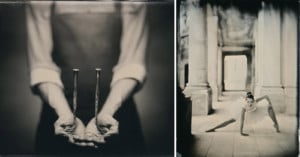
Modern Collodion has just announced the winners of the 2019 Wet Plate Competition, the second annual contest for wet plate collodion photographers around the world after launching last year.
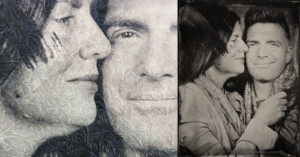
New York photographer Justin Borucki has been documenting his city with a pop-up tintype studio out of the back of his car. While shooting a portrait for a client recently, Borucki unexpectedly captured a beautiful leaf-like pattern across the photo due to the frigid wind chill causing ice crystals to form.

Here's something you may not have known about the 1800s wet plate collodion photography process: it can make certain tattoos disappear in photos. It's a curious phenomenon that photographer Michael Bradley used for his portrait project Puaki.
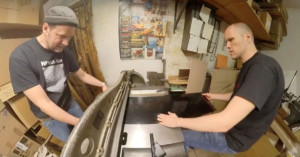
Photographer Markus Hofstaetter often gets asked about how he acquires the plates he uses for wet plate collodion photography. To answer that question, Hofstaetter made this 7-minute video showing how he has them custom cut on a 75-year-old machine.